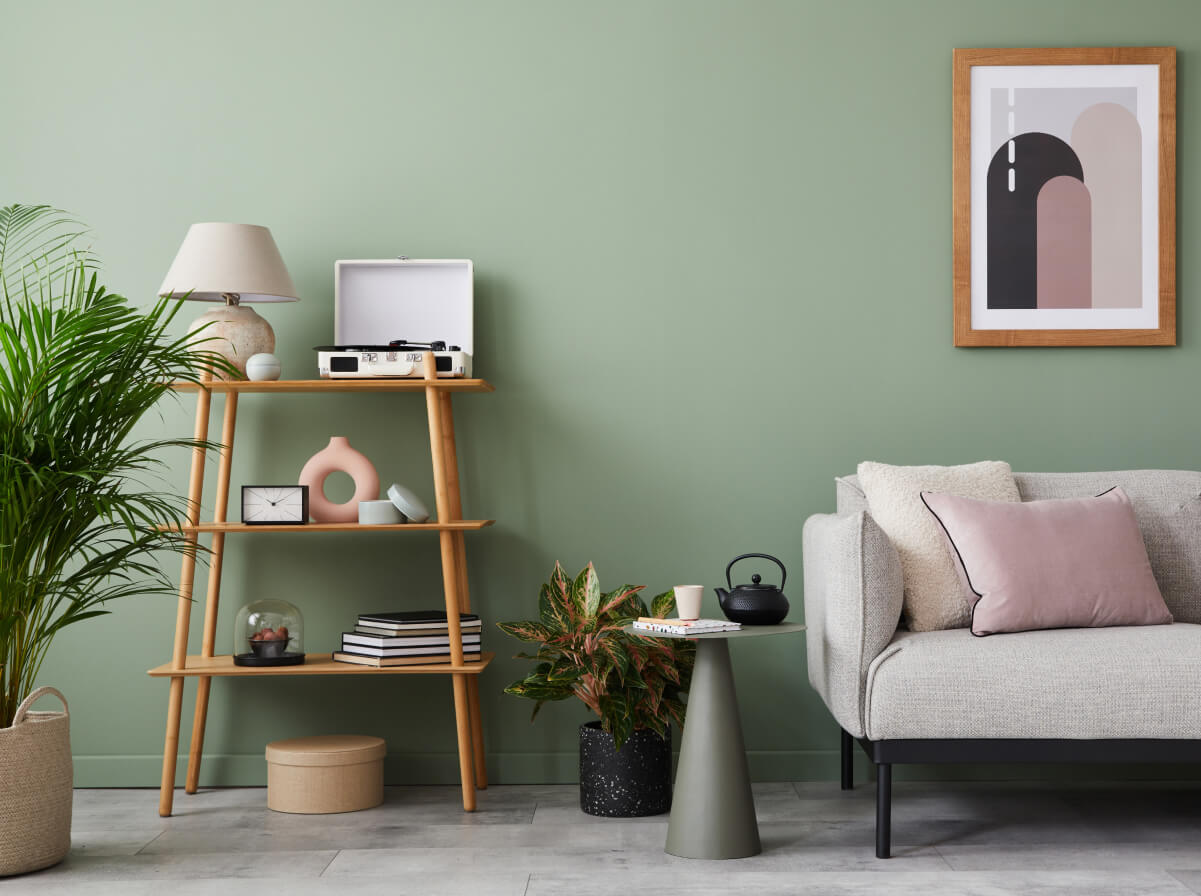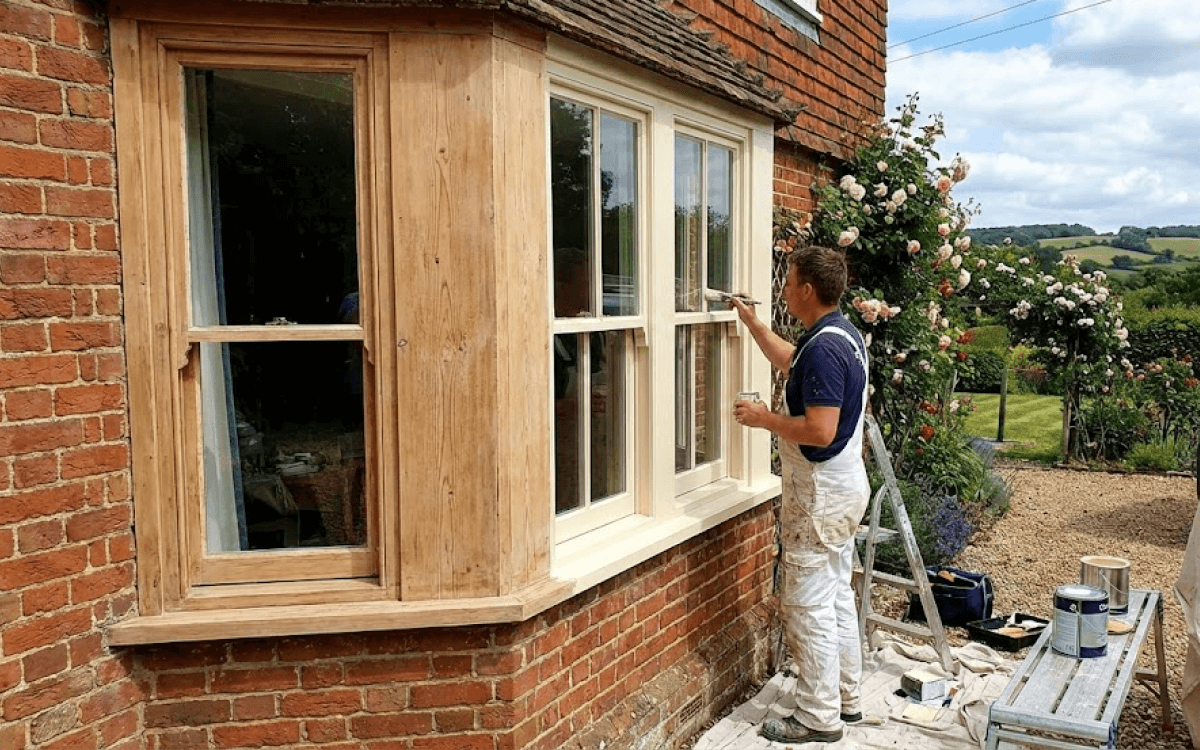

When it comes to your home interior painting, selecting the right white gloss paint can make a significant difference. A fresh coat of paint can breathe new life into a space, creating a new sense of brightness and making it a nicer place to call home.
However, with so many white paint options available in the market, choosing the best white gloss paint can be overwhelming. In this article, we will guide you through all the essential factors to consider, ensuring that you end up with the perfect gloss paint for your living spaces.
What is the best gloss to use?
Whether you’re a professional decorator or a DIY enthusiast, finding the best white gloss paint is essential to achieve a stunning finish. We’ve done the prep work for you and have pulled a list of our top recommendations for the best white gloss available to buy.
Crown Next Generation Gloss
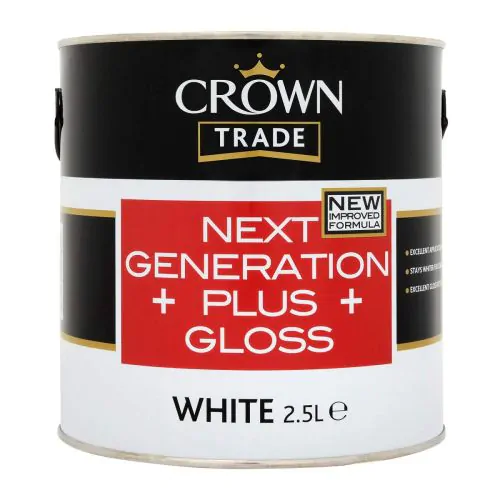
A white gloss that provides impressive longevity in terms of looking like a fresh shade of white is Crown Next Generation gloss. It takes an exceptionally long time to show any signs of discolouration, giving you peace of mind for years to come. You’ll be able to grab a tin online or at your local Crown Decorating Centre.
While Crown Next Generation gloss doesn’t come in “brilliant” white, it does offer a fantastic standard white option that’s incredibly crisp and clean. The real beauty of this gloss lies in its exquisite sheen level and overall finish, which truly stands out from the rest. When applying it, you’ll notice how well it goes on, leaving behind a flawless surface free of any brush marks.
Teknos Futura Aqua 90
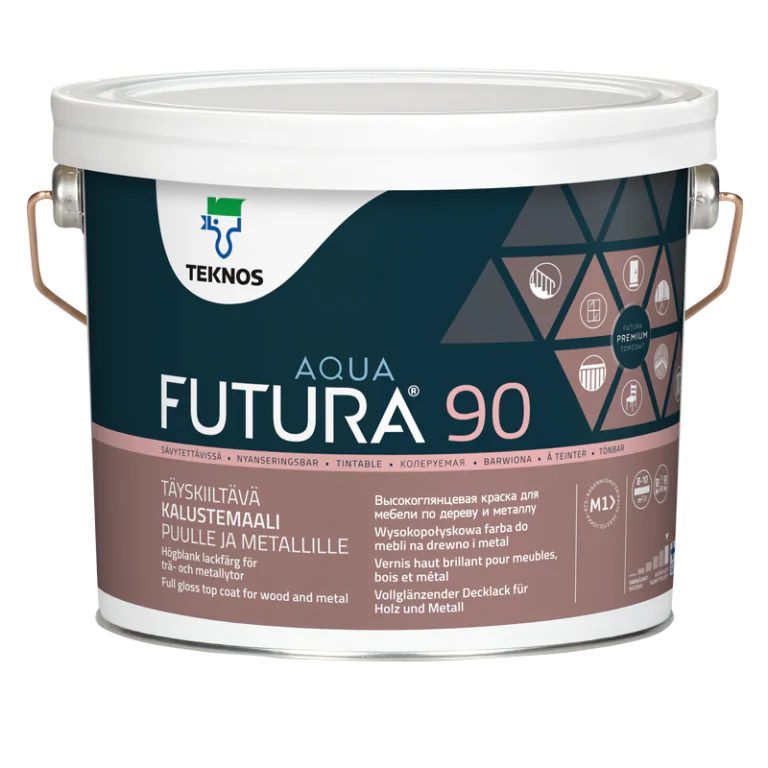
This remarkable white gloss is a hybrid paint, skillfully combining the best qualities of both oil-based and water-based paints. Futura 90 is available in classic white and to ensure optimal adhesion, be sure to pair it with the Teknos Futura primer – a perfect match!
As a team of seasoned decorators, we’ve tried countless products and can confidently say that Teknos Futura 90 stands in a league of its own as the ultimate gloss paint you’ll ever encounter.
While the gloss’s opacity might not be its strongest point, the primer compensates for this flaw. The application process is a dream – you can effortlessly apply multiple coats of either the prime or the white gloss in a single day.
A feature that sets Teknos Futura 90 apart from other hybrid or water-based gloss paints is its incredibly high sheen level, giving your surfaces a stunning finish. But it’s not just about appearances; this paint is also remarkably durable. Expect your surfaces to maintain that brand-new glossy look for years after application.
Johnstone’s Aqua Gloss
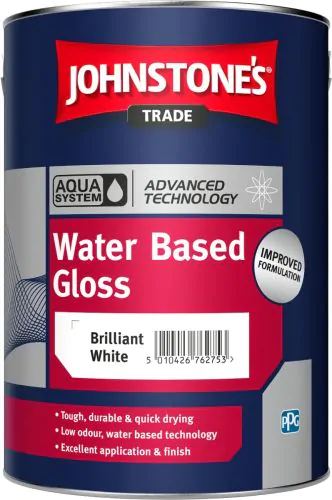
Johnstone’s Aqua Gloss is a reputable hybrid gloss system that has been a top contender in the market for a number of years. You’ll find white, brilliant white, and numerous tints to suit your style; it’s easily accessible both online and at any Johnstone’s Decorating Centre. The exceptional sheen level and user-friendly application make it a popular choice among decorators.
Johnstone’s Aqua Gloss appears to contain more oil than more modern white gloss paints such as the Teknos Futura 90. As a result, cleaning brushes with water alone won’t suffice; a combination of water and White Spirit is recommended for thorough cleaning.
Johnstone’s Aqua Gloss won’t discolour as fast as most oil-based gloss paints, but some gradual yellowing will likely occur after around 2 years.. While it remains a decent choice for those looking for a white gloss, its application can be more challenging than the other paints listed here.
What is gloss paint?
Gloss paint, also known as high-gloss paint, is a type of paint that provides a shiny and reflective finish on surfaces. It is popular for its ability to create a smooth, sleek appearance that enhances woodwork around the home.
The key characteristic of gloss paint is its sheen or level of reflectivity. The finish is typically very smooth, which allows light to bounce off the surface, resulting in a bright and glossy appearance. This feature makes gloss paint an ideal choice for surfaces that require a durable and easily cleanable finish, as it resists stains and is relatively easy to wipe clean with a damp cloth.
Uses of White Gloss Paints
- Interior and exterior trim: Gloss paint is frequently used on skirting boards, window frames, door frames, and other architectural elements to give them a clean and polished look.
- Furniture: Gloss paint is often used on furniture pieces like cabinets, tables, and chairs to provide a smooth and shiny finish.
- Doors: Many people prefer to use gloss paint on doors to create a striking entrance.
- Metal surfaces: Gloss paint is suitable for painting metal objects, such as railings, gates, and metallic fixtures, as it helps protect against rust and adds a decorative touch.
The Best Tools to Apply Gloss
When it comes to applying gloss paint, the correct brush or roller is crucial for achieving a flawless finish. Whether you’re working with oil-based or water-based gloss, having the best brush and roller can make a significant difference.
Best Brush for Oil-Based Gloss
When working with oil-based gloss, a natural bristle paint brush is essential to prevent clogging and achieve smooth results. The Hamilton Perfection brush, a favourite among Decorators, is specifically designed for oil-based applications. With this brush, you can effortlessly apply gloss paint and achieve a perfect finish.
Although oil-based paint such as gloss has gained a reputation as a “brush killer,” a simple solution exists. Regularly wetting the brush and spinning it out in a bucket of water every half an hour prevents the paint from drying and clogging the bristles.
Best Brush for Water-Based Gloss
Water-based or hybrid gloss paints are best applied with a synthetic brush. Grab yourself a brush with durable bristles that maintain their shape throughout the job. The Hamilton Prestige Synthetic Brush is one such brush that offers excellent performance for a reasonable price. Say goodbye to struggles with soft bristles and grab the best brush for water-based gloss.
Best Rollers For Excellent Coverage
To cover larger areas efficiently, using rollers is a must. For oil-based gloss, a foam roller is an ideal choice due to the product’s sticky nature. Any half-decent foam roller will do the job, but be sure to use a fresh tray or scuttle each time to avoid dust and dirt contamination.
If you are applying water-based gloss, the Two Fussy Blokes Smooth roller is a great shout. This roller holds an ample amount of paint and ensures even distribution, resulting in a professional-looking finish.
How to Apply Gloss Paint FAQs
How many coats of gloss paint do I need?
One of the top questions asked by DIY experts is “How many coats of paint do I need when painting with white gloss?”. The answer is that you should use two coats of paint, plus consider adding a base layer primer for the best possible coverage.
Any tips for easy application of gloss paint?
For the best application results, consider using a foam roller followed by a brush for a flawless finish. Keeping your brush damp or wiping the surfaces with a damp cloth before painting will also help you achieve brush mark-free perfection.
Why Does White Gloss Go Yellow?
Ever wondered why white gloss can turn yellow over time? If you are wondering why is my white gloss turning yellow so quickly?, then it is down to the yellowing phenomenon commonly observed in oil-based paint or varnishes, including white gloss, and is caused by a combination of factors:
Chemical Reactions: Oil-based paints and varnishes contain certain chemical components that can undergo reactions with environmental factors. One of the main culprits is the oil itself, which can undergo oxidation. This means that the oil molecules react with oxygen in the air, leading to chemical changes that can cause the paint to turn yellow.
Exposure to Sunlight: UV radiation from sunlight accelerates the yellowing process of gloss paint. UV light can trigger chemical reactions in the paint, breaking down some of its components and causing discolouration.
Yellowing is often more noticeable on surfaces that receive direct sunlight, so consider this when giving your room a makeover.
Temperature and Humidity: Changes in these environmental conditions can influence the rate of chemical reactions within the paint, potentially speeding up the yellowing process.
Additives and Fillers: Some paint formulations may include additives and fillers that are prone to yellowing over time. Low-quality or poorly formulated paint products may be more susceptible to this issue.
Age of the Paint: As paint ages, its chemical composition can change, making it more likely to yellow over time. Older paint is generally more prone to yellowing compared to fresh paint.
How Do You Keep White Paint From Turning Yellow?
To reduce the yellowing of white gloss paint, you can take certain precautions:
- Use quality white gloss paint or varnish that is specifically formulated to resist yellowing.
- Consider water-based or acrylic-based white paints instead of oil-based ones, as they tend to be less prone to yellowing.
- Keep painted surfaces away from direct sunlight or use UV-resistant coatings to minimise the impact of UV radiation.
- Maintain stable indoor conditions with controlled temperature and humidity levels.
Does Water-Based Gloss Go Yellow?
Yes, water-based gloss can go yellow over time under certain conditions. Water-based gloss paints are formulated to dry clear, creating a transparent finish that enhances the appearance of the underlying surface.
However, several factors can cause the water-based gloss to turn yellow, such as exposure to UV light, low-quality ingredients in the paint, humidity and temperature fluctuations and inadequate drying times.
How do you keep white gloss white?
To minimise the risk of yellowing, buy premium water-based gloss paint from a reputable manufacturer and follow their instructions for application and drying times. Additionally, protecting painted surfaces from direct sunlight and harsh environmental conditions can help maintain the paint’s appearance over an extended period.
What is better than gloss paint?
Doing the right prep work! Remember, choosing the right gloss paint is just the beginning. Something perhaps more important is proper surface preparation.
Your gloss application also plays a significant role in achieving a flawless outcome.
You need to aim for an even coverage of your surface area and carefully read up on the drying times on the tin and about the recoat time to ensure the job is completed correctly. Some glosses have a quick drying time if you want to get cracking and get the painting done faster.
